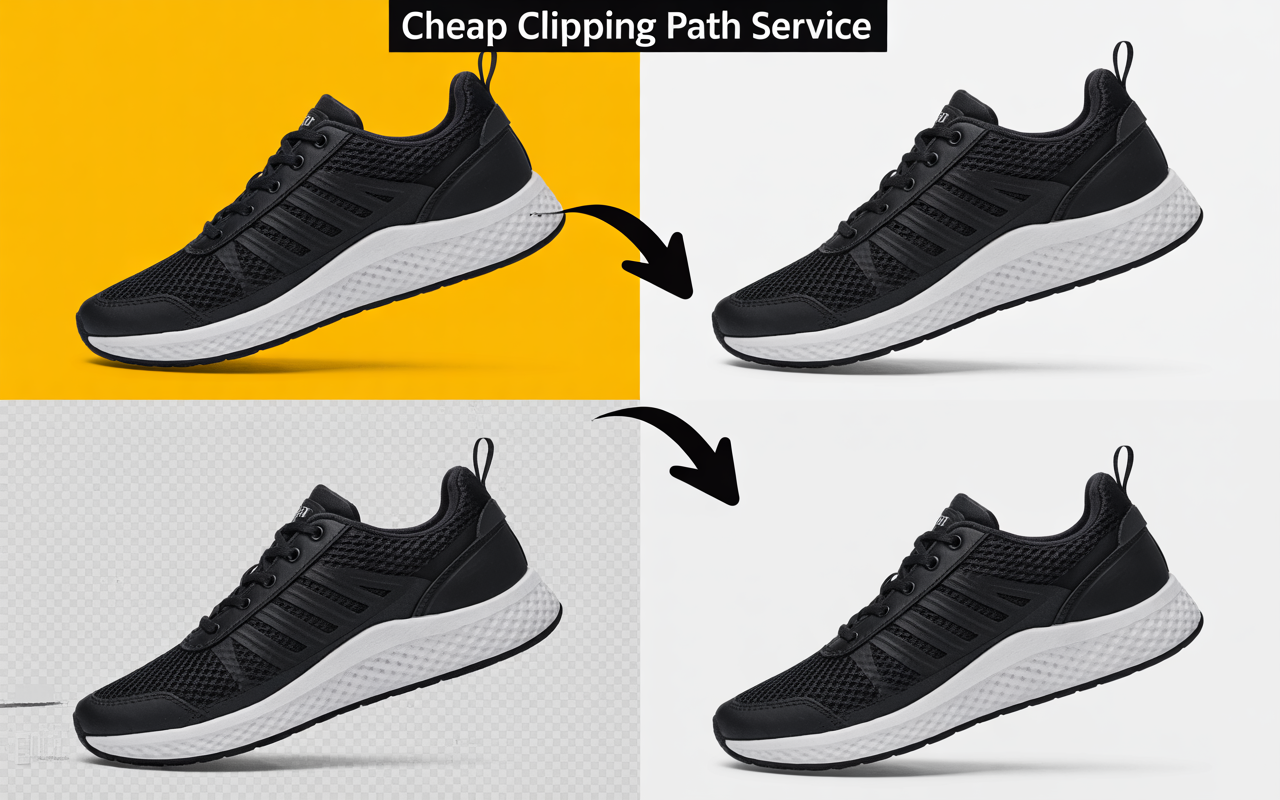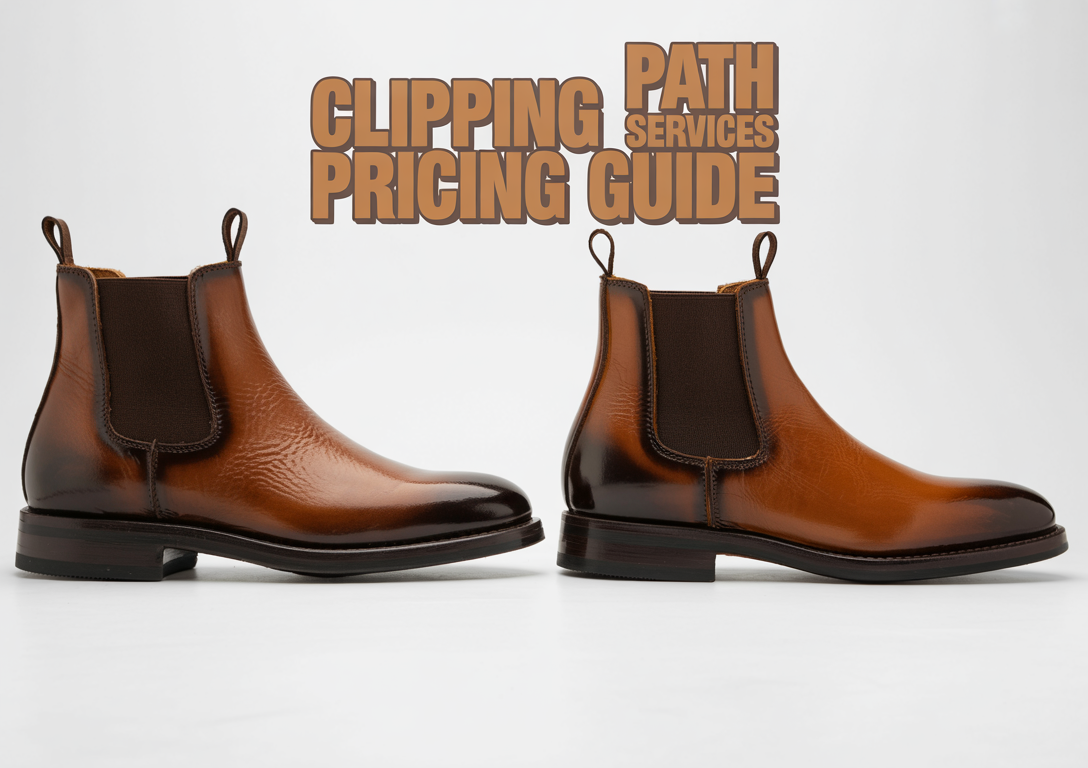What is Clipping Path?
Ever taken a product photo and wished the background could vanish like magic? That’s where clipping path comes in. It’s like using a pair of digital scissors to cut out an object from its messy background. Simple in theory. Game-changing in practice.

Let’s Start with the Basics
A clipping path is a vector path that tells the software what to keep and what to throw away in a photo. The main goal? Isolating an object. Whether it’s shoes, jewelry, or a coffee mug, clipping helps it pop.
Short Answer: A clipping path removes unwanted backgrounds and isolates the subject cleanly.
Why is Clipping Path a Big Deal?
In the world of online shopping and social media, images are everything. You get just seconds to impress someone. A well-clipped product photo? That’s your first impression, handshake, and sales pitch in one.
Short Answer: Clean, clipped images help grab attention and boost conversions.
Clean Backgrounds = Cleaner Looks
No distractions. Just the product. That’s the magic of clipping path services. It gives your product center stage. Think of it like decluttering your room – everything feels sharper.
Power of Focus in Product Photography
Photos with clean backgrounds direct the eye exactly where you want. No messy corners or photo-bombing lamps. Just clean, clear intent.
So, How Does It Actually Work?
Professionals use software like Photoshop to draw a path around the object. It’s all about precision. Once the path is closed, anything outside it can be removed.
Short Answer: Clipping path involves manually outlining an object using Photoshop’s Pen Tool.
The Magic of the Pen Tool in Photoshop
This tool lets you draw a path with control points. It’s like tracing with a steady hand. The better the hand, the cleaner the cut. Learn more about how to use the Pen Tool in Photoshop.
Manual vs. Automatic Clipping
Some tools do it automatically, but machines still miss the mark. Curves, shadows, soft edges – these need a human touch.
Why Professionals Still Do It by Hand
Because every pixel matters. Machines can rush it. Humans? They take time to get that natural edge just right.
My First Time Using Clipping Path
When I first tried it, I thought, “How hard could it be?” Turns out, pretty hard. My lines were jagged. The edges looked like they were chewed.
A DIY Disaster (And What I Learned)
After hours of frustration, I gave up and sent it to a pro. What came back was clean, sharp, perfect. Lesson learned: some things are worth outsourcing.
The Game-Changer: Outsourcing
Now I use clipping path service providers regularly. Fast, affordable, and better than what I can do myself. It’s saved me time and stress.
Who Actually Needs Clipping Path?
Not just photographers. Anyone selling, showcasing, or styling visuals online benefits from it.
Ecommerce Sellers
Amazon, Etsy, Shopify – they all want white backgrounds. Clean images sell better.
Photographers
Weddings, real estate, products – wherever you want focus and clarity, clipping helps.
Marketing Agencies
For clean campaigns and social posts that look polished and professional.
Clipping Path vs. Other Photo Edits
Let’s clear this up. Clipping isn’t the same as masking or using erasers.
Masking vs. Clipping
Masking is more flexible and better for fuzzy things like hair. Clipping? Perfect for sharp edges.
Background Eraser Tools? Meh.
They’re quick. But not reliable. Missed edges and weird leftovers are common.
What Makes a Good Clipping Path?
It’s in the details. Clean lines, smooth edges, and the right level of zoom.
Zoom, Zoom, and More Zoom
Pros zoom in like crazy. Every curve, every edge, gets attention.
Smooth, Natural Edges
No sharp corners unless the product has them. The goal is to make it look real.
Advanced Types of Clipping Path
There’s more than one way to clip. Complex images need complex paths.
Multiple Paths
You can create different paths for different parts of the product. Like multiple clipping path services to clip the strap and the bag separately.
Complex Shapes and Hair Edits
Hair, fur, or transparent stuff? That needs a combo of clipping and masking.
Speed vs. Quality: The Eternal Battle
You want it fast. But you want it right. High-quality clipping takes time, and it’s worth it.
Can AI Do Clipping Paths?
Sure, AI tools are trying. Some are decent. But when it really counts, human editors win.
It Tries… But Falls Short (For Now)
AI still struggles with detail, especially around hair, shadows, and complex shapes.
Clipping Path Services – Are They Worth It?
If you value time and quality, yes. You get polished results and more freedom to focus on growing your biz.
Real Talk: What It Costs
Prices vary. Simple images might cost $0.25. Complex ones? Up to a few dollars. Worth every cent when the photo looks flawless.
Final Thoughts
Clipping path might sound techy, but it’s really just about making your photos look their best. Whether you DIY it or hire help, it’s a skill (or service) that pays off.
FAQs
Q1: What’s the difference between clipping path and background removal?
A: Clipping path is a method of background removal using vector paths. It’s more precise.
Q2: Can I do clipping path with free tools?
A: Yes, but the results may not be great. Photoshop gives better control.
Q3: How long does it take to clip one photo?
A: Depends on complexity. Simple ones take a few minutes; complex ones can take 20+.
Q4: Is it worth paying for a clipping path service?
A: Absolutely, especially for business use. Clean images = better conversions.
Q5: Do clipping paths affect image quality?
A: Not if done right. A good path keeps the subject sharp and clean.









